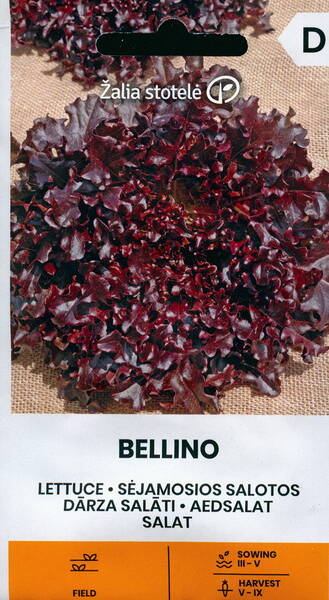Your shopping cart is empty!
Oak-leaved lettuce "Bellino"
"Oak-leaf" lettuce "Bellino".
This is a cherry-red oak-leaved variety.
Early: vegetation 50-55 days.
Resistant to diseases. Grown in open soil for spring, summer and autumn harvesting.
Does not bolt. Large bush with many cherry-red deeply lobed leaves covering the inside of the bush.
* Applying lime is a method of neutralizing acidic soil (pH less than 6.0).
Over time, as a result of introducing manure and mineral fertilizers into the soil and the annual cultivation of cultivated plants that take nutrients from the soil, its acidity increases.
You should not lime the soil every year: if you use a standard crop rotation scheme on your site, then apply lime only to cruciferous crops. This means that you can lime the entire plot of land allocated for the garden in three years.
Do not apply lime “by eye”, since the amount of lime required is easy to calculate based on the acidity level of the soil solution (this indicator can be determined using indicator paper).
Typically, 200-600 g of lime are added per 1 m2, and experts recommend adding crushed limestone rather than slaked lime.
If you don’t have time to do measurements and calculations, then add 200 g of lime per 1 m2.
It is important to carry out liming in a timely manner. If organic fertilizers have not been applied before, then lime, without being incorporated into the soil, is scattered over the surface of the site immediately after digging it. If manure has already been applied, then liming will have to be postponed until spring because lime does not tolerate the presence of fertilizers: be it mineral fertilizers or manure. Therefore, fertilizers are applied to the soil either a month before liming or a month later.
This is a cherry-red oak-leaved variety.
Early: vegetation 50-55 days.
Resistant to diseases. Grown in open soil for spring, summer and autumn harvesting.
Does not bolt. Large bush with many cherry-red deeply lobed leaves covering the inside of the bush.
* Applying lime is a method of neutralizing acidic soil (pH less than 6.0).
Over time, as a result of introducing manure and mineral fertilizers into the soil and the annual cultivation of cultivated plants that take nutrients from the soil, its acidity increases.
You should not lime the soil every year: if you use a standard crop rotation scheme on your site, then apply lime only to cruciferous crops. This means that you can lime the entire plot of land allocated for the garden in three years.
Do not apply lime “by eye”, since the amount of lime required is easy to calculate based on the acidity level of the soil solution (this indicator can be determined using indicator paper).
Typically, 200-600 g of lime are added per 1 m2, and experts recommend adding crushed limestone rather than slaked lime.
If you don’t have time to do measurements and calculations, then add 200 g of lime per 1 m2.
It is important to carry out liming in a timely manner. If organic fertilizers have not been applied before, then lime, without being incorporated into the soil, is scattered over the surface of the site immediately after digging it. If manure has already been applied, then liming will have to be postponed until spring because lime does not tolerate the presence of fertilizers: be it mineral fertilizers or manure. Therefore, fertilizers are applied to the soil either a month before liming or a month later.












